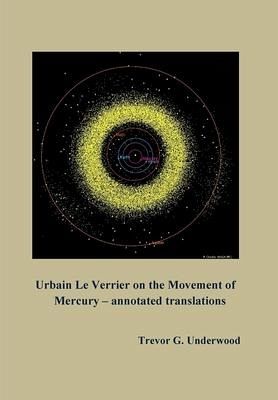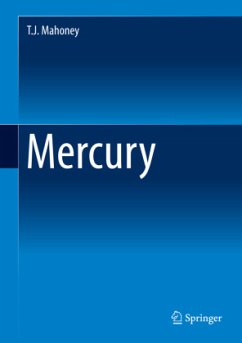
Urbain Le Verrier on the Movement of Mercury - annotated translations
Versandkostenfrei!
Versandfertig in über 4 Wochen
54,99 €
inkl. MwSt.

PAYBACK Punkte
27 °P sammeln!
In 1916, Einstein proposed three tests of general relativity, subsequently called the "classical tests" of general relativity: ¿ the perihelion precession of Mercury's orbit ¿ the deflection of light by the Sun ¿ the gravitational redshift of light. The key evidence on which Einstein relied to support his theory was the first of these, which related to unexplained errors in the observations of Mercury's orbit reported in 1859 by Urbain Le Verrier, the Director of the Paris Observatory. As the available publications that led to Le Verrier's claim, which were developed over a period of nearly...
In 1916, Einstein proposed three tests of general relativity, subsequently called the "classical tests" of general relativity: ¿ the perihelion precession of Mercury's orbit ¿ the deflection of light by the Sun ¿ the gravitational redshift of light. The key evidence on which Einstein relied to support his theory was the first of these, which related to unexplained errors in the observations of Mercury's orbit reported in 1859 by Urbain Le Verrier, the Director of the Paris Observatory. As the available publications that led to Le Verrier's claim, which were developed over a period of nearly two decades, were complex and only available in French, as part of a larger project, I translated them into English and annotated them, to make them easier to understand. As it appeared that this might be helpful to other researchers, I decided to publish my translations in the current volume. This book provides translations of two books, Le Verrier, U. -J. (1841), Développements sur Plusieurs Points de la Théorie des Perturbations des Planètes (Developments on several points of the Theory of Perturbations of Planets); and Le Verrier, U. -J. (1845), Théorie du mouvement de Mecure (The Theory of the Movement of Mercury); and a 195-page article, Le Verrier, U. -J. (1859), Theorie du Mouvement de Mercure (The Theory of the Movement of Mercury), Chapter XV in the Annales de L'Observatoire Impérial de Paris. It also includes a translation of the 1859 letter in which Le Verrier reported his claim, Lettre de M. Le Verrier à M. Faye sur la théorie de Mercure et sur le mouvement du périhélie de cette planète (Letter from M. Le Verrier to M. Faye on the theory of Mercury and on the perihelion movement of this planet), which was published in the Comptes rendus hebdomadaires des séances de l'Académie des Sciences (Paris). The conclusions from this detailed review are that, rather than implying a systematic error in the calculated values, the steady reduction in the errors in the equations of condition could be seen to be a demonstration of a linear improvement in the accuracy of the measurements over time as one might expect, resulting in no adjustment to the elliptic elements, and no difference between the calculated rates of precession, and no support for Einstein's theory of general relativity.












